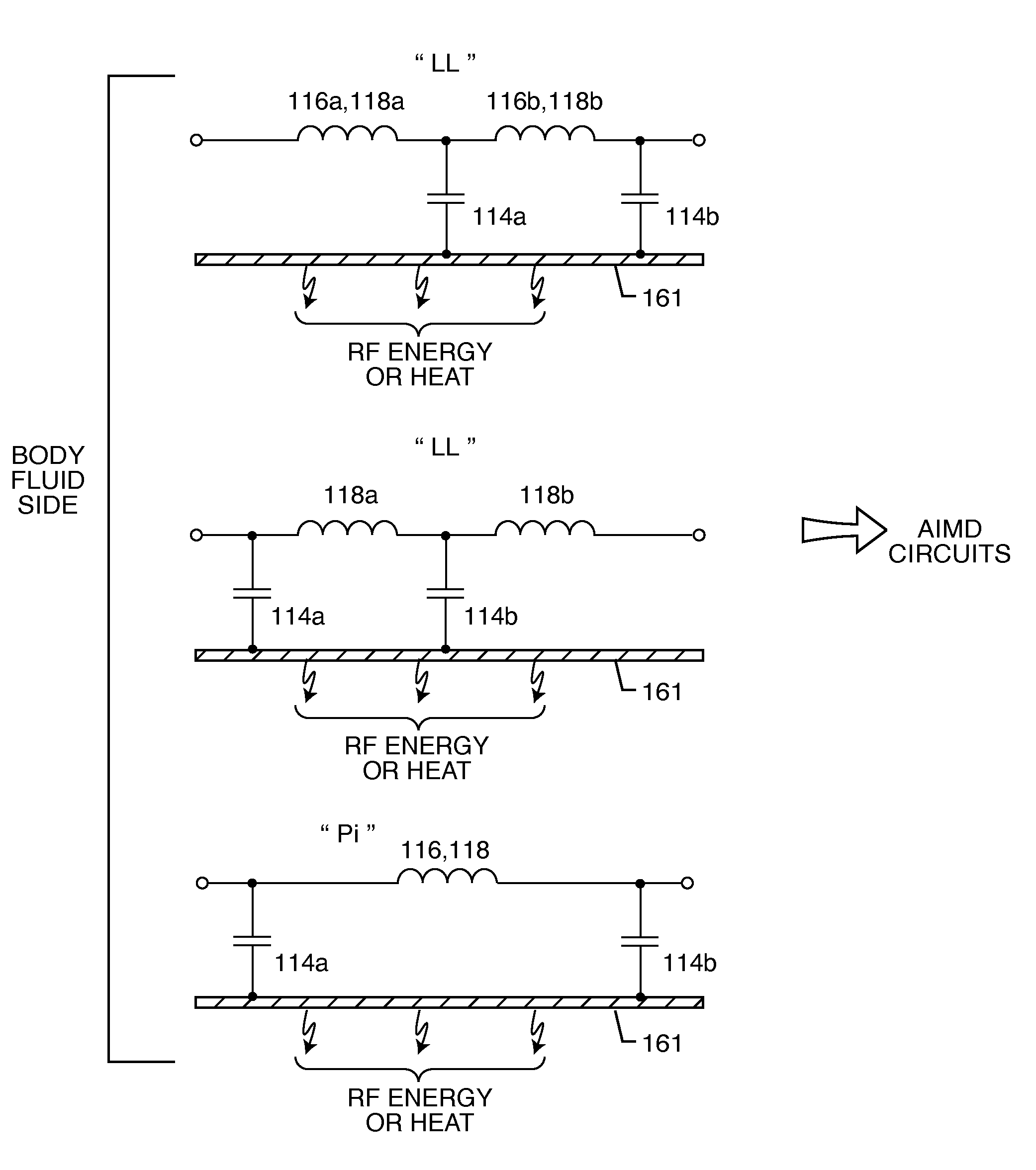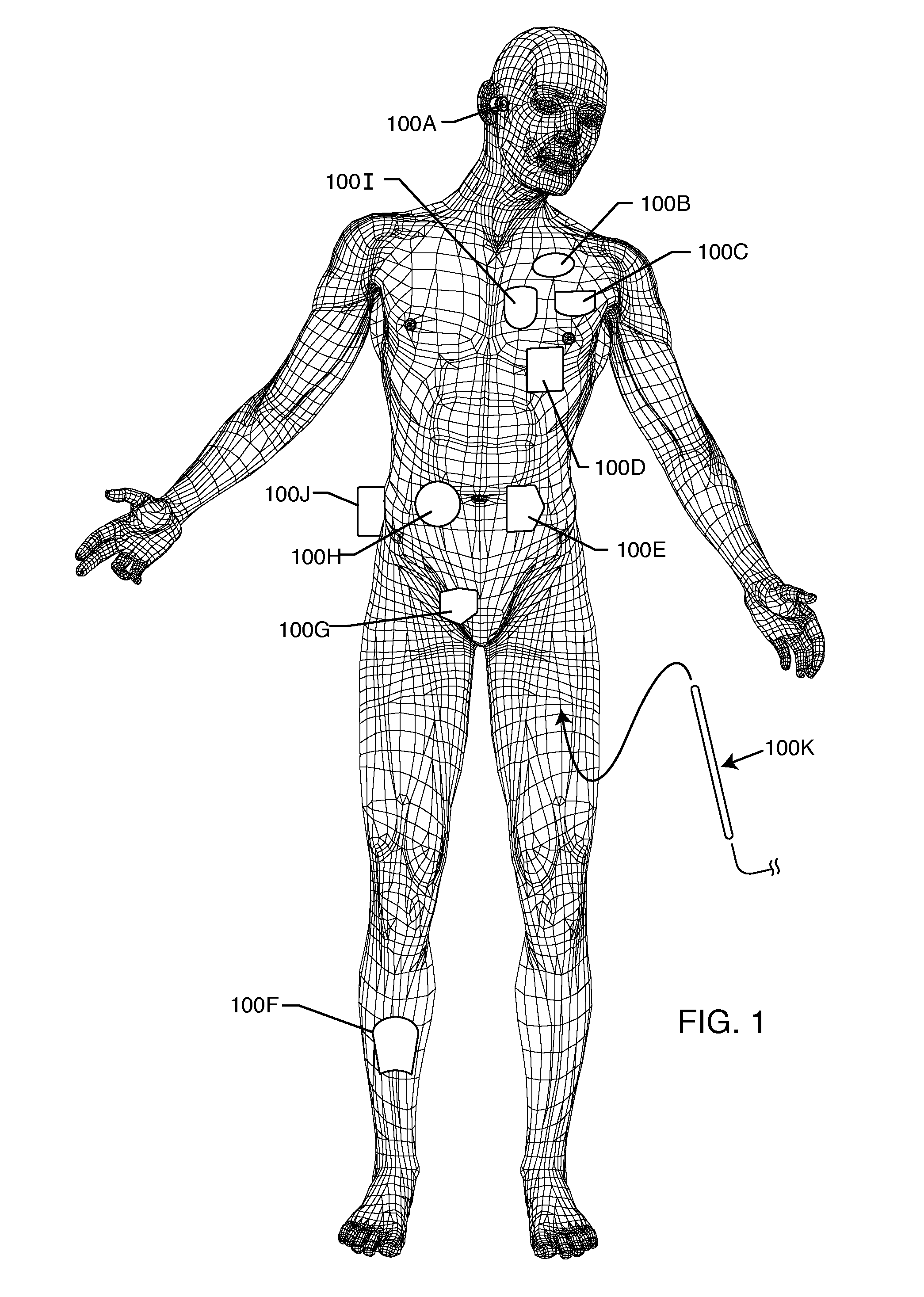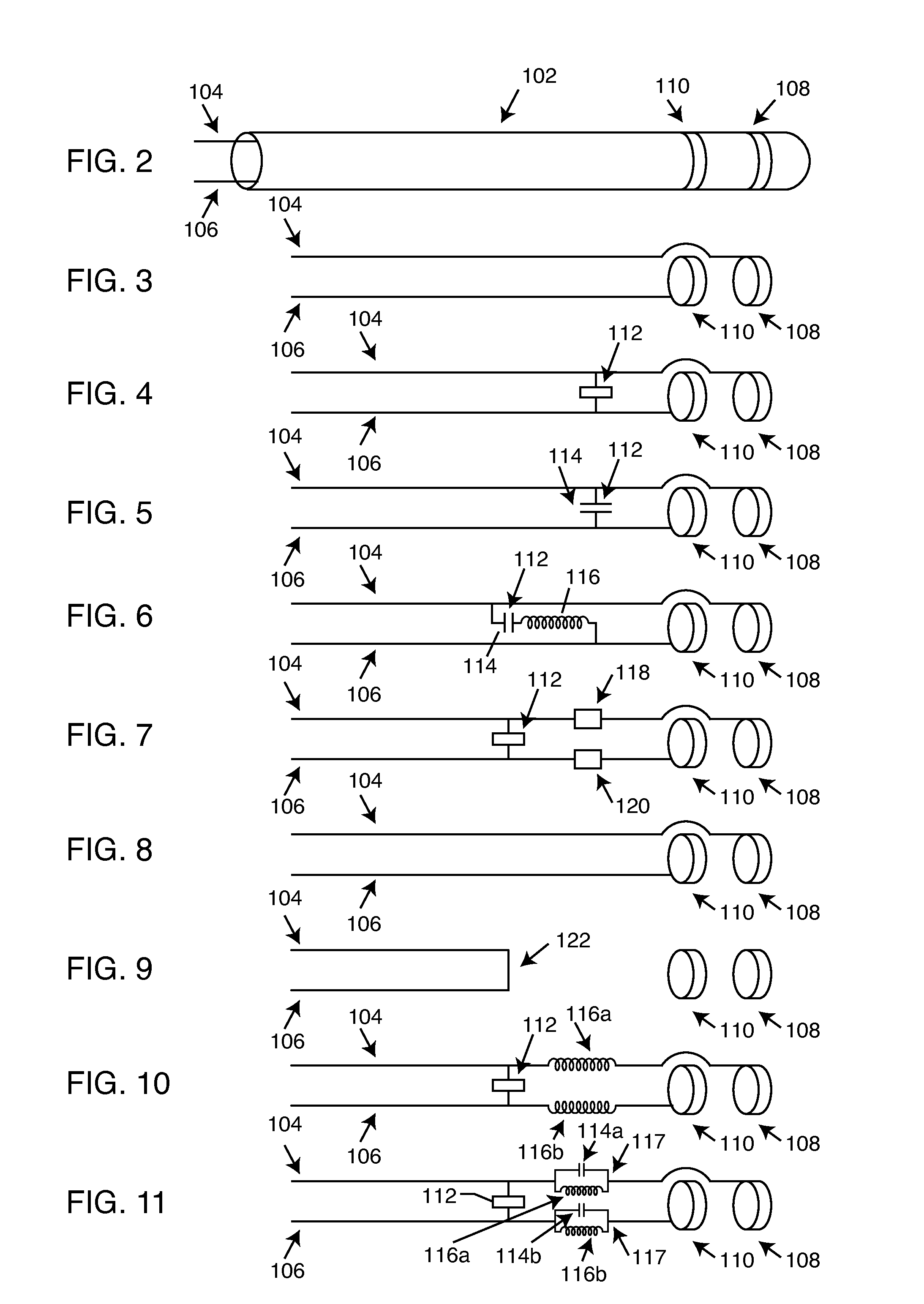Switched safety protection circuit for an AIMD system during exposure to high power electromagnetic fields
a safety protection circuit and electromagnetic field technology, applied in the field of energy induced on implanted leads, can solve the problems of insufficient predictiveness of sar level, latent problems of cardiac pacemakers, and inability to integrate magnetic resonance imaging (mri) into active implantable medical devices,
- Summary
- Abstract
- Description
- Claims
- Application Information
AI Technical Summary
Benefits of technology
Problems solved by technology
Method used
Image
Examples
Embodiment Construction
[0171]As shown in the drawings for purposes of illustration, the present invention resides in a tuned energy balanced system including a switched diverter circuit, for minimizing heating of an implanted lead in a high power electromagnetic field environment. The tuned energy balanced system comprises an implanted lead having impedance characteristics at a selected RF frequency or frequency band, and an energy dissipating surface associated with the implanted lead. An energy diversion circuit conductively couples the implanted lead to the energy dissipating surface. The diversion circuit comprises one or more passive electronic network components whose impedance characteristics are at least partially tuned to the implanted lead's impedance characteristics, to facilitate transfer to the energy dissipating surface of high frequency energy induced on the implanted lead at the selected RF frequency or frequency band.
[0172]More particularly, the present invention resides in a switched div...
PUM
 Login to View More
Login to View More Abstract
Description
Claims
Application Information
 Login to View More
Login to View More - R&D
- Intellectual Property
- Life Sciences
- Materials
- Tech Scout
- Unparalleled Data Quality
- Higher Quality Content
- 60% Fewer Hallucinations
Browse by: Latest US Patents, China's latest patents, Technical Efficacy Thesaurus, Application Domain, Technology Topic, Popular Technical Reports.
© 2025 PatSnap. All rights reserved.Legal|Privacy policy|Modern Slavery Act Transparency Statement|Sitemap|About US| Contact US: help@patsnap.com



